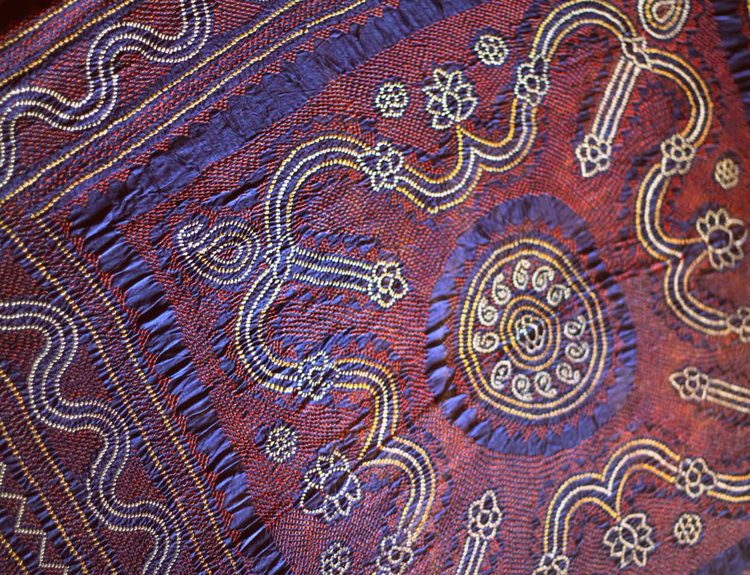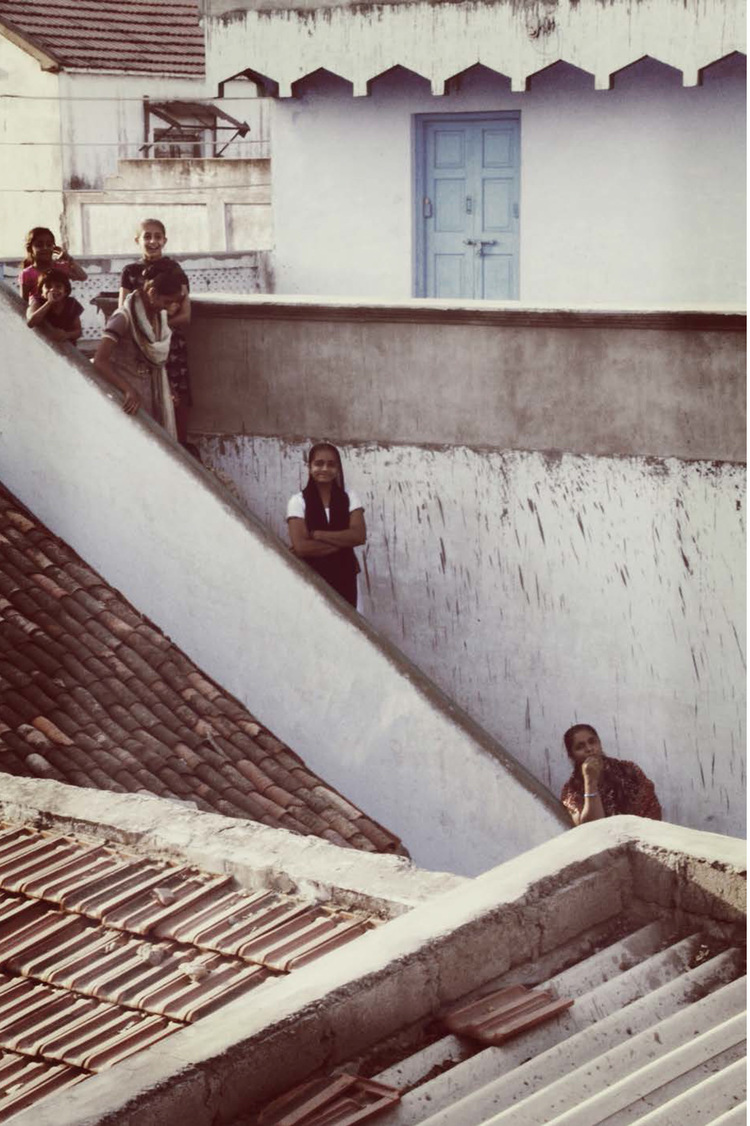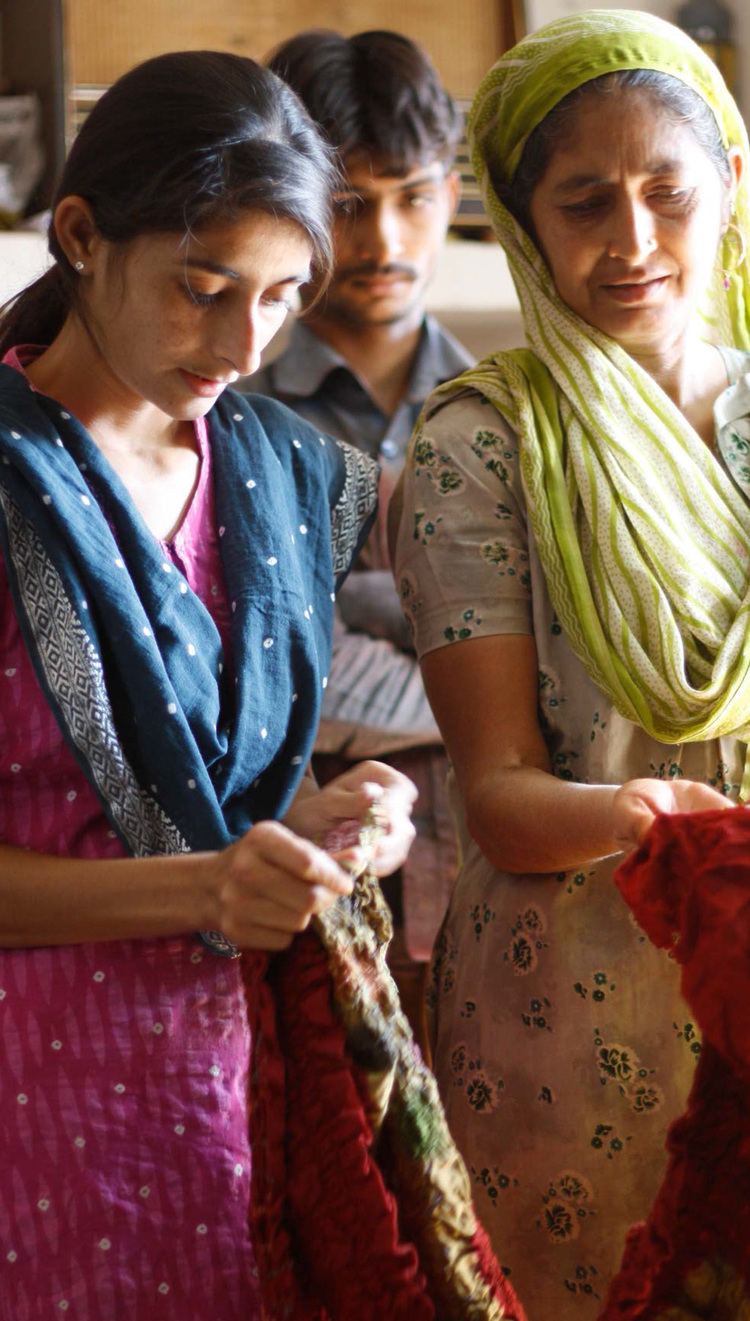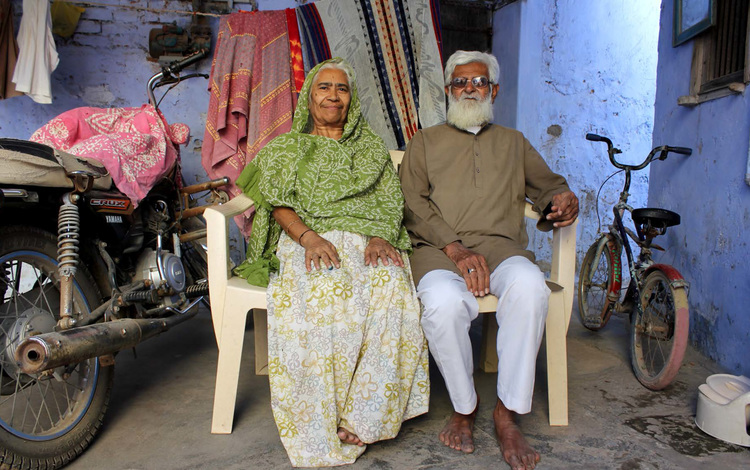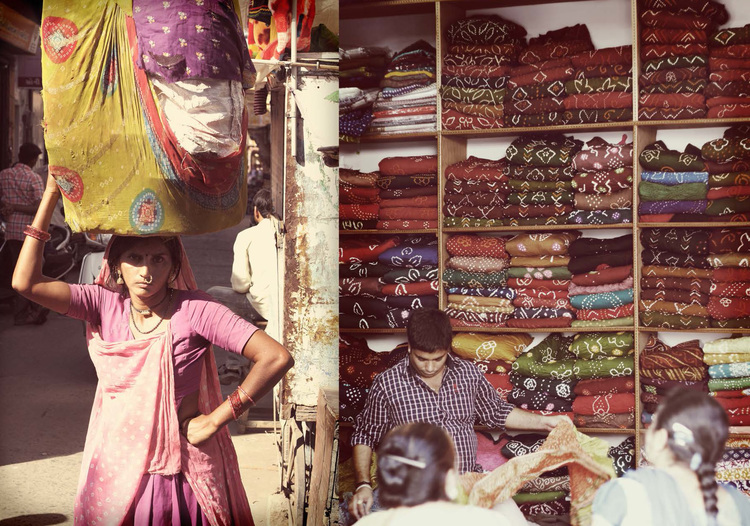Mundra
Mundra was famous for its salt and spice trading but is now known for its tie-dye and batik print textiles. Darya Pir, considered a patron saint of Mundra's fishermen, is said to have introduced Islam to the local people in 1660. Today, there is a shrine dedicated to him along with the famous Mughal Gate erected in his honor.
The production of bandhani in Mundra is of a large scale, especially in silk and cotton. The silk bandhani of Mundra is appreciated by Hindu, Muslim and Jain communities all over India, and most of the finest quality is purchased by Jain traders from Bhuj , Jamnagar, Mumbai and other cities. Additionally, the climatic conditions of Mundra are also favorable for dyeing.
Spotlight on the artisans: Dawood Yusuf and Sarabai Khatri
Dawood Yusuf Khatri and his wife Sarabai live in a small house in a narrow alley in Mundra. Dawood Khatri learned this craft from his maternal grandfather when he was 7 years old and has enjoyed it ever since. As a boy, he liked working with dyes but he also developed an interest in fine tying work. He received training in Jamnagar early in his career, and has great respect for his guru (teacher). Upon his return to Kachchh, Dawood shared his knowledge with other artisans while his wife trained many of the best tying artisans in Mundra. Dawood's work has remained very true to his beginnings as he still works mainly with traditional designs. His wife still ties at home, working on gharcholas and other saris.
The family's favorite piece, a traditional odhani with very fine tying, won them a National Award. The design, printing, tying, and dyeing was all done by members of the house. Dawood Khatri believes that it makes a difference when someone really puts their heart into their work, and it can be seen in the quality of the work. The moment their piece was ready, the family decided that they would keep it as a family heirloom.
"I encourage people to train others in this work since it is a good source of income, especially for women, as they can do it in their free time sitting in their home. When I was young, I only learned this line of work because I was interested in it. I used to mess up my grandfather's dyes and then they would get wasted. I came ahead only because I was interested in it and wanted to keep learning. Even now, I am interested in learning. ”
- Dawood Yusuf Khatri
PRODUCT FOCUS: KHOMBHI
A khombhi is a type of odhani worn by Muslim Khatri brides, and is always red and black in color with a central medallion and a wide border with a variety of designs. Often, a zari border is added to the garment, containing very intricate bandhani designs. Multiple communities all across Kachchh wear khombhis, such as Memon, Khojas, Kumbhar and Sonara. Each community's khombhi contains a particular combination of elements and motifs, ranging from the most popular chandrokhani and shikari to lesser used bar bhag and baghiro designs.
Explore other regions:

